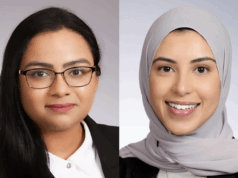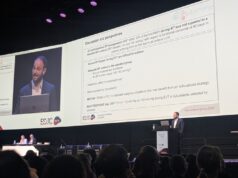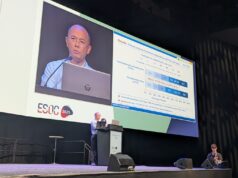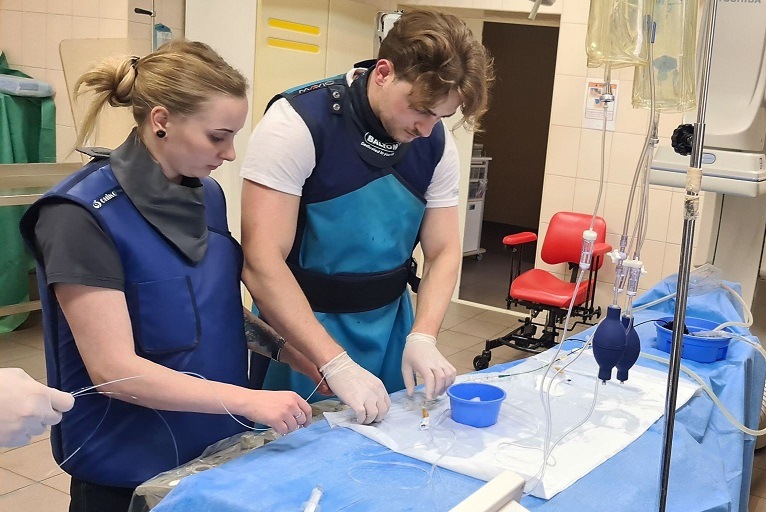
Remote teleproctoring has demonstrated promising results in providing hands-on mechanical thrombectomy training and overcoming wartime migration restrictions in Ukraine, according to initial experiences published recently in the journal Interventional Neuroradiology.
“Teleproctoring brings together specialists who are engaged in INR [interventional neuroradiology] all around the world and improves treatment outcomes globally,” Dmytro Shchehlov (National Academy of Medical Sciences [NAMS] of Ukraine, Kyiv, Ukraine), head of the All-Ukrainian Association of Endovascular Neuroradiology, told NeuroNews.
“It is extremely relevant in Ukraine right now—not only because of wartime migration restrictions, but also considering [the country’s] lack of high-qualified and confident physicians able to perform INR procedures without senior mentors who can provide meaningful advice during complex cases, or for complication avoidance.”
Shchehlov—who co-authored the recent paper alongside Mykola Vyval (NAMS of Ukraine, Kyiv, Ukraine), Jens Fiehler, and Anna Kyselyova (both University Medical Center Hamburg-Eppendorf, Hamburg, Germany)—went on to note that, at present, a select few regional Ukrainian hospitals are equipped with remote telemedical facilities, but added that their number “continues to increase”.
“And teleproctoring should undoubtedly be used in more distant corners where specialists take their first steps in INR using new devices, or need to overcome some difficult situations,” he continued.
Current challenges in Ukraine
Setting the scene for their report in Interventional Neuroradiology, Shchehlov and colleagues initially note that “INR has not yet received official certification as a surgical subspecialty in Ukraine”, and that “consequently, there is uncertainty surrounding the availability of a neurosurgical internship and a structured INR training programme to provide neuroendovascular procedures”.

The authors go on to state that thrombectomy becoming the standard of care for large vessel occlusion (LVO) acute ischaemic stroke in recent years has further amplified the country’s need for INR specialists—which “far exceeds the current supply”. While INR facilities have been established in an attempt to address this, they lack highly skilled staff, according to Shchehlov et al. And, following the relaxation of COVID-19-related migration restrictions, the Ukrainian medical system is now facing “new limitations” due to ongoing wartime conditions.
“In such circumstances, international cooperation becomes crucial to ensuring the safe and effective implementation of new technologies into routine medical practice,” the authors aver.
With this in mind, researchers at the NAMS of Ukraine’s Research and Practical Centre for Endovascular Neuroradiology in Kyiv set about integrating the remote, international teleproctoring of hands-on courses into their education protocols. In their report, Shchehlov and colleagues note that such approaches can serve as a “practical adjunct option, providing specialists with the latest scientific data and techniques”.
A novel solution
In order to establish a connection with the Department of Diagnostic and Interventional Neuroradiology at the University Medical Center Hamburg-Eppendorf—and provide a hands-on course focused on mechanical thrombectomy to a total of 149 enrolled participants—Ukrainian physicians utilised the Tegus telemedical system (Tegus Medical).
“The Tegus system has been designed around interventionalists’ needs,” said co-author Fiehler, who also disclosed that that he owns stocks and shares in the company in question, speaking to NeuroNews. “It is robust and very intuitive to use. There are not many buttons but, in the background, what runs is a very high-resolution streaming technology with extremely low latency.
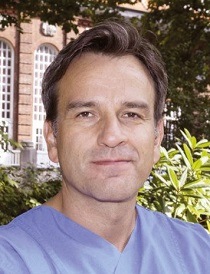
“In this instance, we used the system for teaching and training purposes, which is much more relaxed than the stressful situations in which Tegus support is requested from trusted colleagues to help with first uses of devices, or in case of complications. It was sent to our Ukrainian colleagues who were able to put it together in just a few steps—a kind of ‘plug-and-play’ approach.”
Shchehlov and colleagues report that, of the 149 enrolled participants, eight attended the practical session and 141 joined online via Zoom. Prior to the telemedical session, mentors provided detailed lectures on thrombectomy techniques using aspiration with a stent retriever.
The first part of the session was streamed live from Hamburg, where mentors demonstrated thrombectomy procedures on a flow model and engaged in detailed discussions, while the second part—conducted in Kyiv—consisted of a hands-on session during which eight participants performed mechanical thrombectomies under the supervision of mentors.
Teleproctoring: does it work?
Following completion of the course, participants were asked to complete a survey regarding its effectiveness. A total of 51 participants (34.2%) completed the survey, with 39 of these respondents (76.5%) being male and 29 (56.8%) being less than 40 years of age.
“It is noteworthy that all participants (100%) considered the practical neurointerventional course to be highly significant,” Shchehlov et al relay. “Interestingly, prior to the course, only three participants (5.9%) expressed extreme confidence in mechanical thrombectomy, while 15 participants (29.4%) had no confidence in their abilities. A majority of the participants—specifically 38 individuals (74.5%)—expressed their intention to apply the acquired knowledge and skills in their daily practice, and reported being completely satisfied with the course. Furthermore, an overwhelming majority of 49 participants (96.1%) expressed their willingness to recommend this training to others.
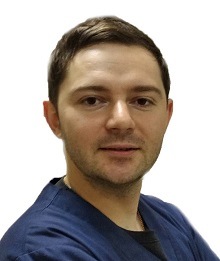
“We effectively incorporated teleproctoring into our practical training and discovered it to be a promising strategy, considering the future’s uncertainty and the existence of Ukrainian wartime migration restrictions. It may be possible to connect new professionals with seasoned mentors and beneficial first-hand experience through teleproctoring practical courses.”
In addition to reporting “promising results” in overcoming wartime restrictions with remote teleproctoring, the authors suggest that these approaches “can be applied in similar circumstances” as well.
“Access to a telemedical platform has given us the opportunity to conduct neurointerventional courses dedicated to the treatment of aneurysms, AVMs [arteriovenous malformations] and strokes in Ukraine. These first courses were extremely successful and received much positive feedback. I want to thank all involved—especially Prof Fiehler and Prof Hans Henkes [Klinikum Stuttgart, Stuttgart, Germany], who supported this initiative and helped in its implementation,” said Shchehlov, also noting that he and his colleagues plan to deploy the Tegus system further for new devices, educational courses and internal usage moving forward.
Concluding messages
This positive outlook notwithstanding, the authors acknowledge the limitations they encountered during the teleproctoring course, including the diversity of manufactured devices with unique characteristics across different countries, which “can be confusing”. Shchehlov and colleagues therefore advocate “advanced device preparation” and “the presence of more experienced colleagues alongside participants”, stating that the latter can help prevent potential mistakes from being overlooked while trainees are focusing on the crucial steps of a procedure.
“However, to the best of our knowledge, this is the first attempt to utilise teleproctoring for a remote hands-on course in INR,” the authors state, concluding their Interventional Neuroradiology report. “Despite the current limitations, we believe that international teleproctoring hands-on courses have a unique advantage: they break boundaries and provide the opportunity to learn from the best specialists worldwide, transcending the challenges posed by war, distance, and restrictions. INR is a lifelong journey that requires significant mental and physical effort, and every opportunity to enhance knowledge and skills should be fully utilised.”
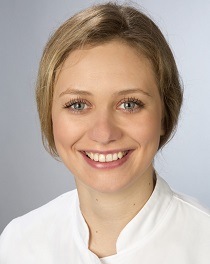
Discussing key differences between remote teleproctoring and ‘the real thing’ with NeuroNews, Fiehler asserted that the former enables ad-hoc participation in emergency procedures, adding: “How else would you proctor [an acute] stroke case?”
“It is way more efficient too—you can join for the decisive 10 minutes of a procedure without wasting time watching the groin puncture,” he continued, drawing on what he observed during the Ukrainian workshop, as well as his experiences as a remote proctor over the past few years. “Another positive is that you can actually see better because you can zoom in from higher above—on both the hands and the monitors—and you can switch viewing angles in fractions of a second.
“The communication is surprisingly good as well. For many trainees, it is less intimidating to have the proctor ‘in your ear only’, and you can talk much more as a remote proctor because there is no risk of exposing your colleague in front of others. And, on a meta-level, remote proctoring is way more cost-efficient [and environmentally friendly] than travelling to proctor.
“The major downside is missing out on red wine with your colleagues on the evening before the procedure—it will likely complement rather than replace the real thing but, in my mind, remote proctoring is here to stay and to grow.”

